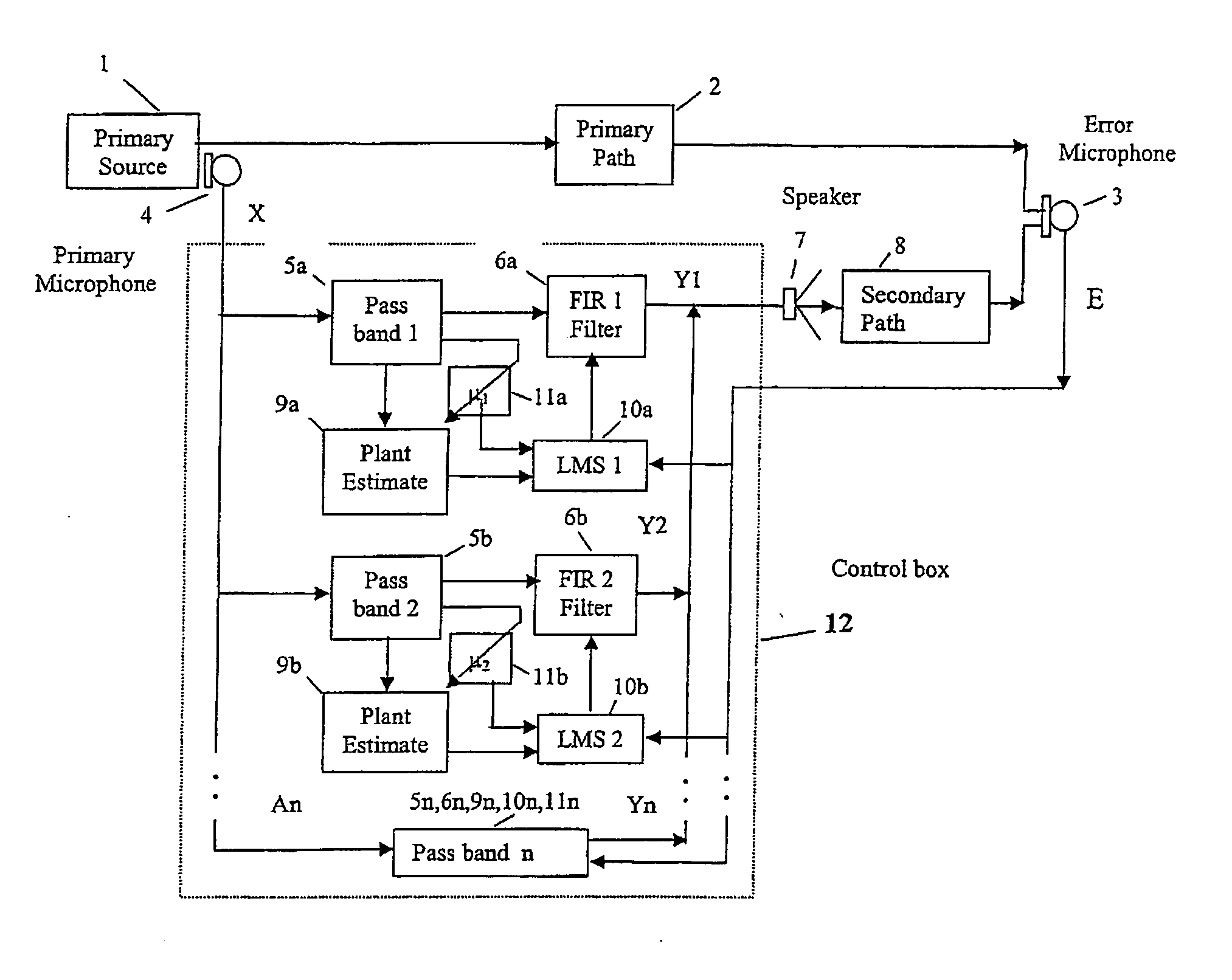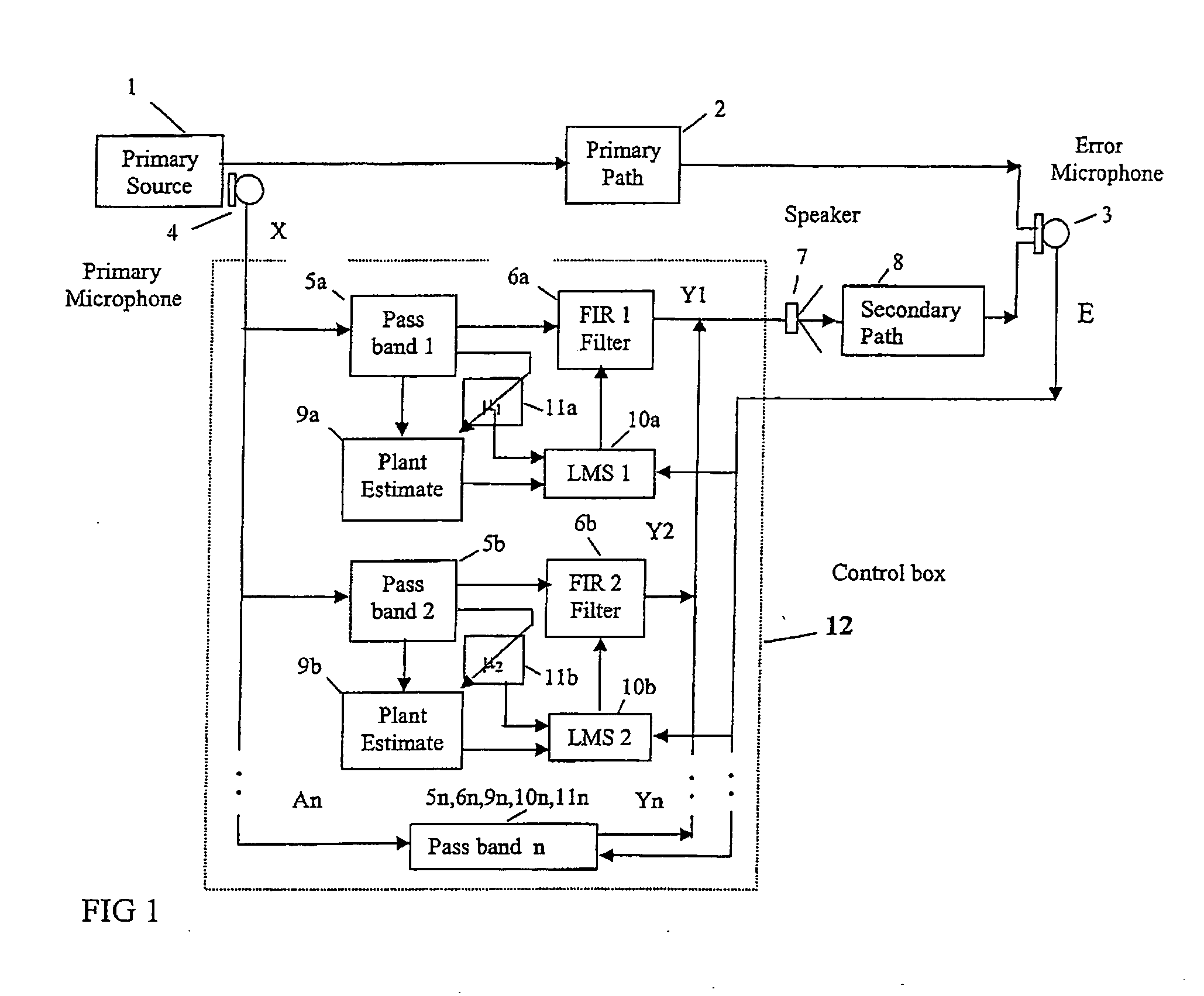Active noise control system in unrestricted space
a noise control and unrestricted space technology, applied in the field of noise control systems, can solve the problems of slow adaptation to primary source changes, inability to rapidly change the noise of the primary source, and conventional adaptive cancellation systems using traditional transverse finite impulse response (fir) filters, which are well known in the prior art, and can not be used to cancel rapid change of nois
- Summary
- Abstract
- Description
- Claims
- Application Information
AI Technical Summary
Benefits of technology
Problems solved by technology
Method used
Image
Examples
Embodiment Construction
[0014] In the figures, like reference numerals indicate like parts and multiple like elements are denoted using lower case letters as sub-reference numerals.
[0015] Referring firstly to FIG. 1, there is shown a multi-passband, variable μ, fixed β method to increase the adaptive speed of transverse FIR filters to primary source changes. The approach is to divide the source spectrum bandwidth into frequency pass-bands, where each passband has a separate FIR filter with its own μ made inversely proportional to A2 in each passband, tending to maintain a constant β and therefore adaptive speed, irrespective of the spectrum amplitude. Thus a faster and similar response of the cancellation sound to the unwanted noise, will be more nearly obtained as the number of passbands increase for a given total spectrum bandwidth.
[0016]FIG. 1 shows a primary noise source 1 which produces a primary noise to be cancelled. This noise is shown to propagate along a primary path 2. There is further shown a...
PUM
 Login to View More
Login to View More Abstract
Description
Claims
Application Information
 Login to View More
Login to View More - R&D
- Intellectual Property
- Life Sciences
- Materials
- Tech Scout
- Unparalleled Data Quality
- Higher Quality Content
- 60% Fewer Hallucinations
Browse by: Latest US Patents, China's latest patents, Technical Efficacy Thesaurus, Application Domain, Technology Topic, Popular Technical Reports.
© 2025 PatSnap. All rights reserved.Legal|Privacy policy|Modern Slavery Act Transparency Statement|Sitemap|About US| Contact US: help@patsnap.com



